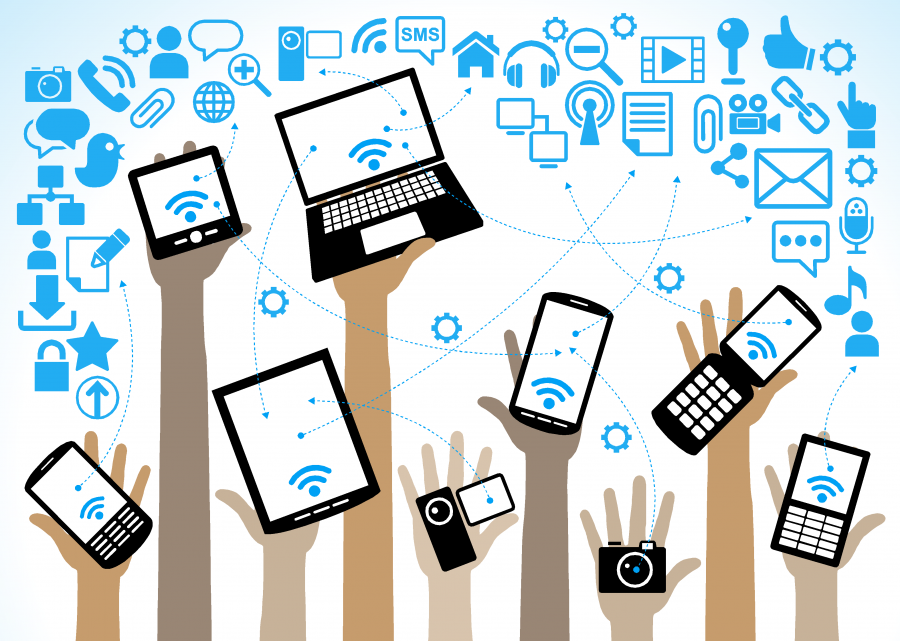Technology: Aid or Distraction in the Classroom?
February 11, 2016
Technology within the classroom has been drastically changing over the recent years. 8 years ago, teachers were using chalkboards to teach, and now today, teachers are using innovative interactive whiteboards. These whiteboards can have the material projected, which saves the teachers from tediously writing material on the board. They are able to make the whole lesson plans in slides, expediting the process of creating lesson plans. Most teachers accept that interactive whiteboards have made teaching easier and more interactive.
Technology for the students has been changing substantially too. In the early 2000’s, most students in classrooms did not use their phones, because they most likely had clunky flip phones and social media wasn’t as prominent as it is now. Students were not distracted by their phones and paid more attention in class. Times have changed: there are countless things students can do on their phones, which are now the major distraction in the classroom.
Most students have smartphones, which allow them to check Instagram, Twitter, and play a myriad of games on their devices. According to the Pew Research Center, 92 percent of teens report going online daily with their cellphones, which affects learning in classes. Checking your phone in class may hamper students from doing well in class.
Innovative tech has had positive impacts and also negative impacts in the classroom. Smart Boards facilitate the process of teaching, which helps the students learn more. More than 3.2 million Smart Boards have been installed globally (www.smarttech.com), which further refutes the efficaciousness of interactive whiteboards in classrooms. On the contrary, new smartphones have been ruining the students’ attention during class, leading to poorer grades, and classroom performance.
Some sources delineate how cellphones can be used as a learning tool in classrooms. In one school district in Washington DC, They permit cellphones in classrooms. Teachers in the district use educational applications on the smartphones to allow “students to work on collaborative projects, like Edmodo, poll their students with programs like poll everywhere, or collect, share and disseminate materials and photos with Dropbox.” (Fox News) While in a few cases this could be beneficial in a small percentage of classrooms, the students could just use computers or laptops to do the same thing, and it will make teacher’s time supervising much easier because the teachers can see what the students are doing on the laptops. With smartphones, students can easily hide what they are viewing with just a touch on the screen.
All of these factors need to be considered in determining if technology overall is an aid or distraction in the classroom.

